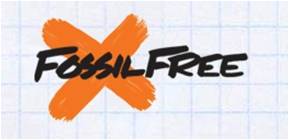The resistance to taking action on climate change is a classic example of what in systems thinking terms is called “bounded rationality,” where people act in their rational self-interest in the short-term yet together create results no one wants. “Bounded rationality” was a term coined by Herbert Simon, an economist. Donella Meadows, the late scientist, author, and systems thinking analyst, describes it this way in her book Thinking in Systems: “bounded rationality means that people make quite reasonable decisions based on the information they have. But they don’t have perfect information, especially about more distant parts of the system.” Or in the case of climate change, we make rational decisions for the short-term while discounting their collective effects and their longer-term term consequences. She writes “we don’t foresee (or choose to ignore) the impacts of our actions on the whole system.”
A recent story from 350.org, a grassroots movement to solve the climate crisis, illustrates this system dynamic. Their new campaign, Divest from Fossil Fuels, is aimed at getting colleges and universities to divest their endowments from  fossil fuel corporations and reinvest it in socially and environmentally responsible companies. Students on close to 50 campuses all over the country are meeting with administrators, staging events, teach-ins, and rallying support.
fossil fuel corporations and reinvest it in socially and environmentally responsible companies. Students on close to 50 campuses all over the country are meeting with administrators, staging events, teach-ins, and rallying support.
Fiona Gettinger, a sophomore at University of New Hampshire (UNH) and President of the Student Environmental Action Coalition, described what happened as they advocated for divestment at UNH in this post. Students learned that decisions on investment go through the UNH Foundation. This was the response they received back to their request for divestment:
“The UNH Foundation’s primary responsibility as stewards of donor-endowed funds is to generate the maximum amount of return for UNH to support students, faculty and programs.”
She went on to write “UNH cannot continue making all of its decisions only considering what is profitable instead of what is ethical. At what cost to society do we keep running business as we are?” She also questions how the term “fiduciary duty” is interpreted. This is the legal obligation of one party to act in the best interest of another. She writes “while the term is too often used to mean exclusively increasing profits, fiduciary duty is actually a broad obligation to ensure that UNH’s mission is best upheld. UNH was established as an agricultural school, therefore a commitment to the prevention of further climate change is absolutely fundamental.”
At one level the Foundation’s focus on getting the greatest return on its investments makes complete sense. The UNH President Huddleston said “affordability and access to higher education remain our number one priority as an institution and we have to rely more and more on private donations in the wake of historic cuts by the state.” Yet, at another level of the system, the funds invested in fossil fuel corporations perpetuate a fossil-fuel based economy at a time when society needs a massive shift in investment and adoption of energy efficiency and renewable to preserve a stable climate. And for UNH, the weather-related impacts and distruptions of climate change will likely have significant impacts on the university, its infrastructure, and the stability and livability of the planet and society its graduates will live in for years to come.
In these situations of bounded rationality, the way to create change is not to blame the individual who is making the decision or get mired in an us/them cycle of offense/defense. Instead, the players involved can take a wider lens and explore how the system itself is structured and appreciate the goals and needs at each level. In this process, more possibilities for innovative solutions arise. For example, one could create a dialogue with the Foundation, the environmental group, and a range of other stakeholders and start with an open question, such as: How can UNH get the greatest return on its investments while contributing to the transition to cleaner energy?
Another way to spur innovative solutions is to consider this design principle from permaculture: “The problem is the solution.” For example, In Vermont, the Vermont Energy Action Network convened a diverse set of stakeholders to analyze what is would take to transition the state to meeting 80% of its 2030 energy needs through efficiency and renewables. They found that mobilizing capital was one of the key leverage points for change. How could universities across the country pool a portion of their endowments in a fund to provide capital to energy efficiency, solar, wind, and other clean energy projects? What structures, policies, incentives, and information would be needed to create this?
The pressure for change from this student movement can be the lever to spur the system to evolve to a healthier state, where actions at each level are mutually reinforcing and beneficial. As Donella Meadows writes “from a wider perspective, information flows, goals, incentives, and disincentives can be restructured so that separate, bounded, rational actions do add up to results that everyone desires.”
